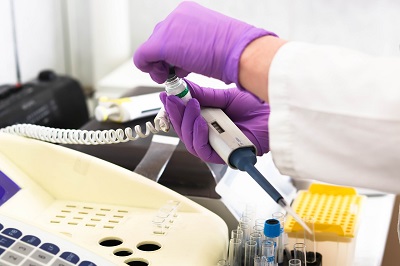What is the 3rd Class Medical Device RZN Registration in Russia?
In Russia, medical devices are classified into three risk categories:
- Class 1: Low-risk devices (e.g., bandages, wheelchairs)
- Class 2: Medium-risk devices (e.g., dental fillings, blood pressure monitors)
- Class 3: High-risk devices (e.g., implantable devices, life-sustaining devices, devices that monitor vital functions)
Class 3 medical devices are the highest-risk devices, typically those that are directly involved in life support or that could pose a significant risk to the patient if they malfunction. Examples of Class 3 devices include:
- Pacemakers
- Defibrillators
- Implantable prosthetics
- Blood purification devices (dialysis machines)
In Russia, Class 3 devices require rigorous evaluation and regulatory approval to ensure their safety, effectiveness, and compliance with the technical standards and regulations set by the Federal Service for Surveillance in Healthcare (Roszdravnadzor).
How to Apply for 3rd Class Medical Device Registration in Russia (RZN Registration)
The process to register a Class 3 medical device with Roszdravnadzor is comprehensive, involving several steps. Below is a detailed guide on how to apply:
1. Classify the Device
Ensure the device is correctly classified under Class 3 according to the Russian regulation. This classification is based on the risk to patient health, the duration of use, and the complexity of the device. Class 3 devices typically require more extensive clinical testing and documentation.
2. Appoint an Authorized Representative in Russia
Foreign manufacturers must have a local authorized representative in Russia to handle the registration process. This representative will act as the main contact for all regulatory matters and will be responsible for submitting documents and managing communication with Roszdravnadzor.
3. Prepare the Required Documentation
A wide range of documents must be prepared for submission to Roszdravnadzor, including:
- Application Form: Complete the registration application form provided by Roszdravnadzor.
- Clinical Data: Provide clinical trial data or clinical performance data that proves the safety and effectiveness of the device. This data is crucial for Class 3 devices and may need to be generated specifically for the Russian market if not already available.
- Risk Management Files: Conduct a risk assessment, including a risk management report, and provide supporting documents like Failure Modes and Effects Analysis (FMEA) or Hazard Analysis.
- Device Description: Provide detailed information about the device, including its design, technical specifications, materials, intended use, and how it works.
- Manufacturing and Quality Control Documentation: Ensure you provide information about the manufacturing processes and compliance with international standards (e.g., ISO 13485 or Good Manufacturing Practices).
- CE Marking (if applicable): If the device already has CE certification or is approved in another major market, it is beneficial to include this, as it provides evidence of the device's conformity with international safety standards.
- Clinical Evaluation Report: This includes data showing how the device has been clinically evaluated or tested for its intended use.
4. Submit the Application to Roszdravnadzor
The application is submitted through the Russian Ministry of Health's official portal or directly to Roszdravnadzor. The application should include:
- The completed registration application form.
- The required documentation, including technical files, clinical data, and risk assessments.
- Any other additional documents as requested by Roszdravnadzor.
Foreign manufacturers must submit their application through an authorized local representative.
5. Review and Evaluation
Once submitted, Roszdravnadzor will evaluate the documentation. The regulatory body may request additional information or clarification, or it may recommend additional tests or studies. For high-risk Class 3 devices, this phase may involve:
- Technical Expertise: Roszdravnadzor may ask for expert reviews to verify the device’s compliance with Russian standards, such as GOST-R or other relevant safety standards.
- Testing (if necessary): If the device has not been previously tested for safety and efficacy in Russia, additional lab testing or clinical trials may be required.
6. On-Site Inspection (if applicable)
Although not always mandatory, some high-risk devices might require an on-site inspection of the manufacturing facility by Roszdravnadzor to verify compliance with quality control and regulatory standards.
7. Registration Approval
Once Roszdravnadzor is satisfied with the documentation and evaluation, they will issue the registration certificate for the medical device. This registration will be valid for 5 years, after which it will need to be renewed.
8. Post-Market Surveillance
After receiving the registration, manufacturers must comply with post-market surveillance requirements. This includes:
- Reporting adverse events or device malfunctions.
- Updating the registration certificate if there are any changes to the device or its manufacturing process.
- Ensuring continuous compliance with Russian standards.
Timeline and Fees
- Timeframe: The registration process for Class 3 devices can take anywhere from 6 to 12 months, depending on the complexity of the device and the completeness of the documentation submitted.
- Fees: The registration fees for Class 3 devices are typically higher than those for Class 1 or Class 2 devices, reflecting the greater complexity and risk associated with these devices.
Key Considerations
- Language: All documents must be in Russian or officially translated into Russian. Non-Russian-speaking manufacturers should ensure they have reliable translation services.
- Regulatory Representation: It is critical to work with a local regulatory consultant or authorized representative to navigate the Russian regulatory landscape effectively.
- GOST-R and ISO Compliance: Russia adheres to GOST-R standards for medical devices. Compliance with international quality management systems (e.g., ISO 13485) is also often required.
By carefully following these steps and working with an experienced representative or consultant, manufacturers can successfully register their Class 3 medical devices with Roszdravnadzor in Russia.

Contact Us:
Whatsapp or Wechat:+86 15816864648;email address:hito.lin@grzan.cn
.png)
.jpg)
.png)

.png)